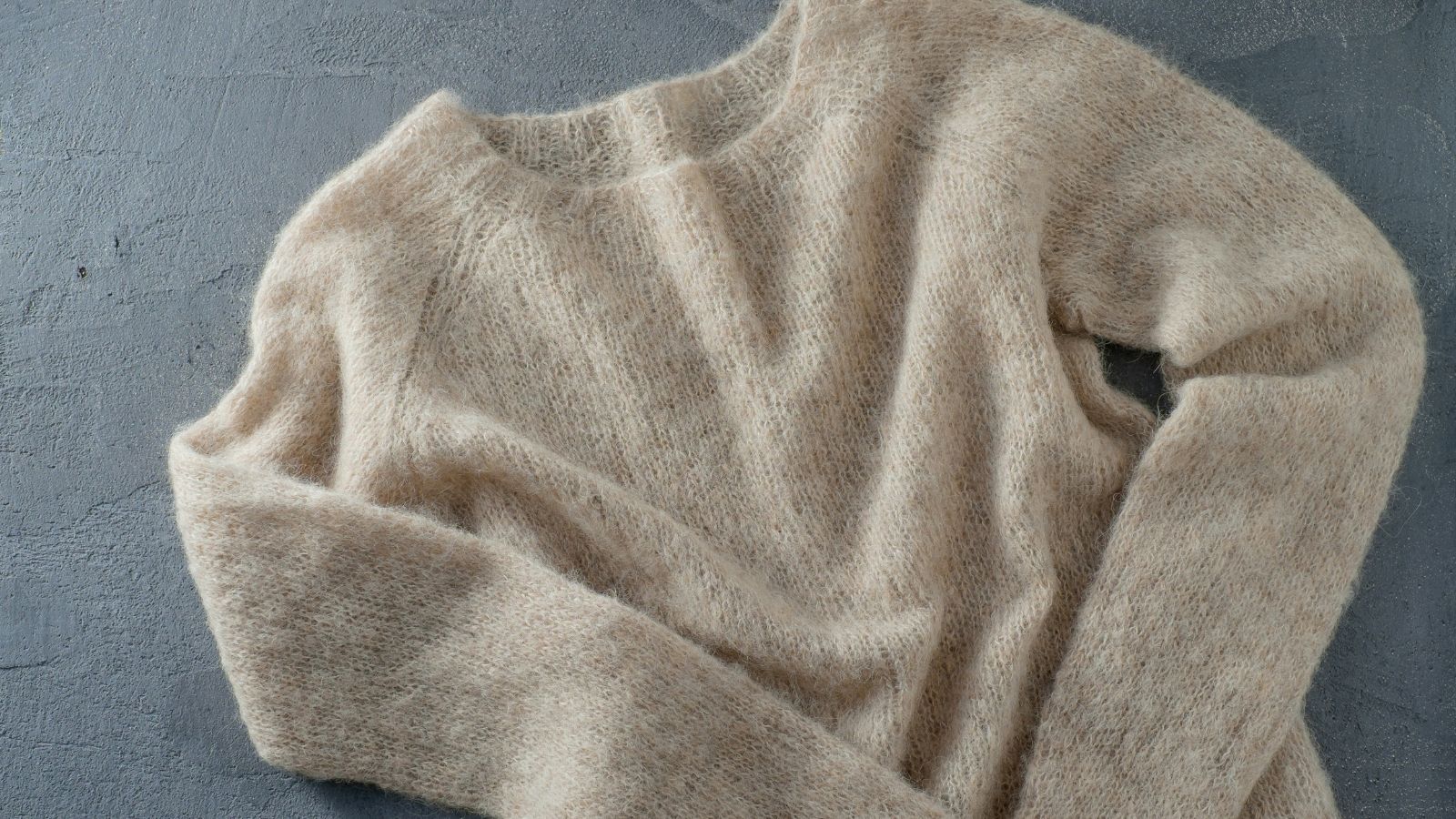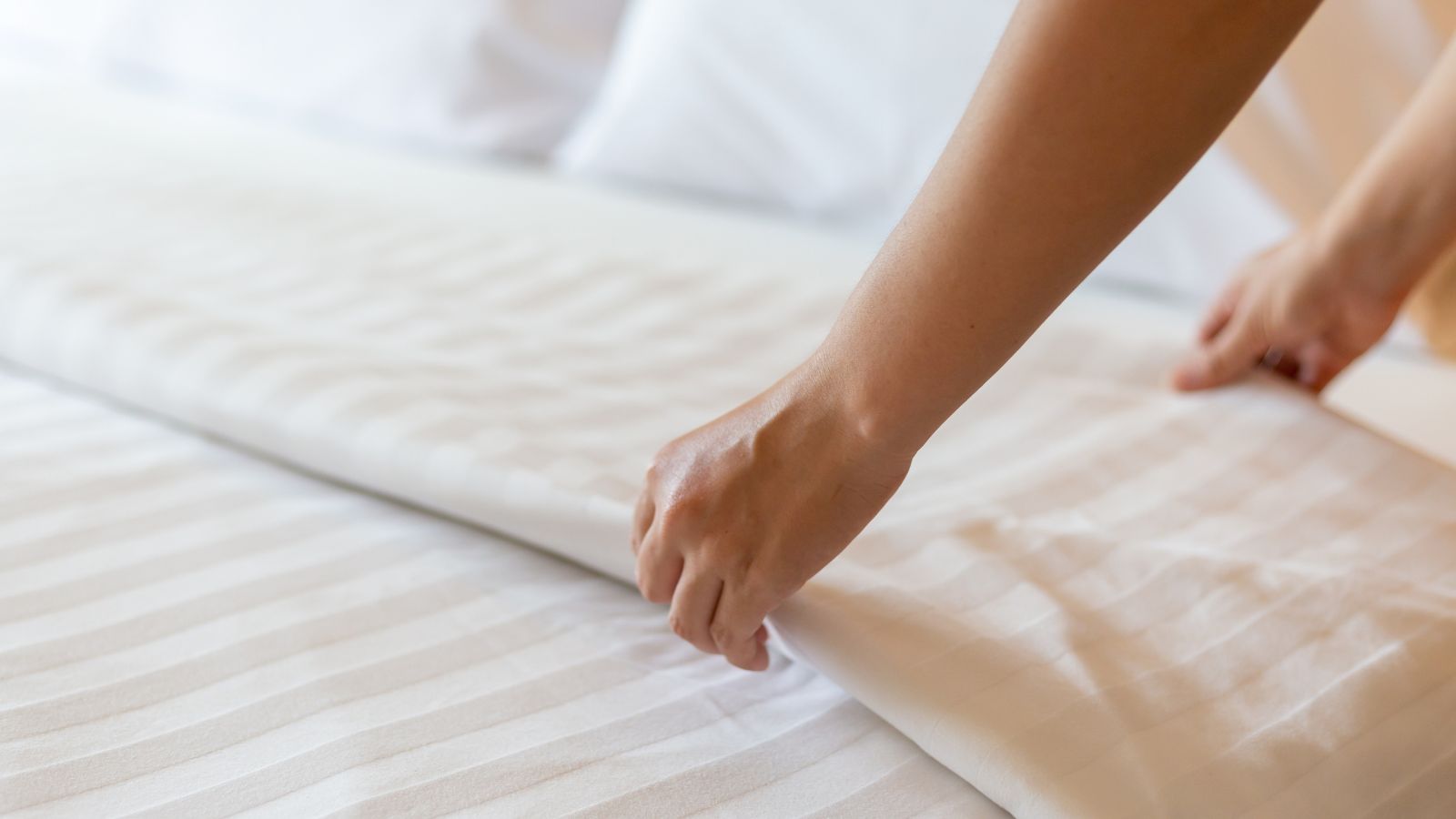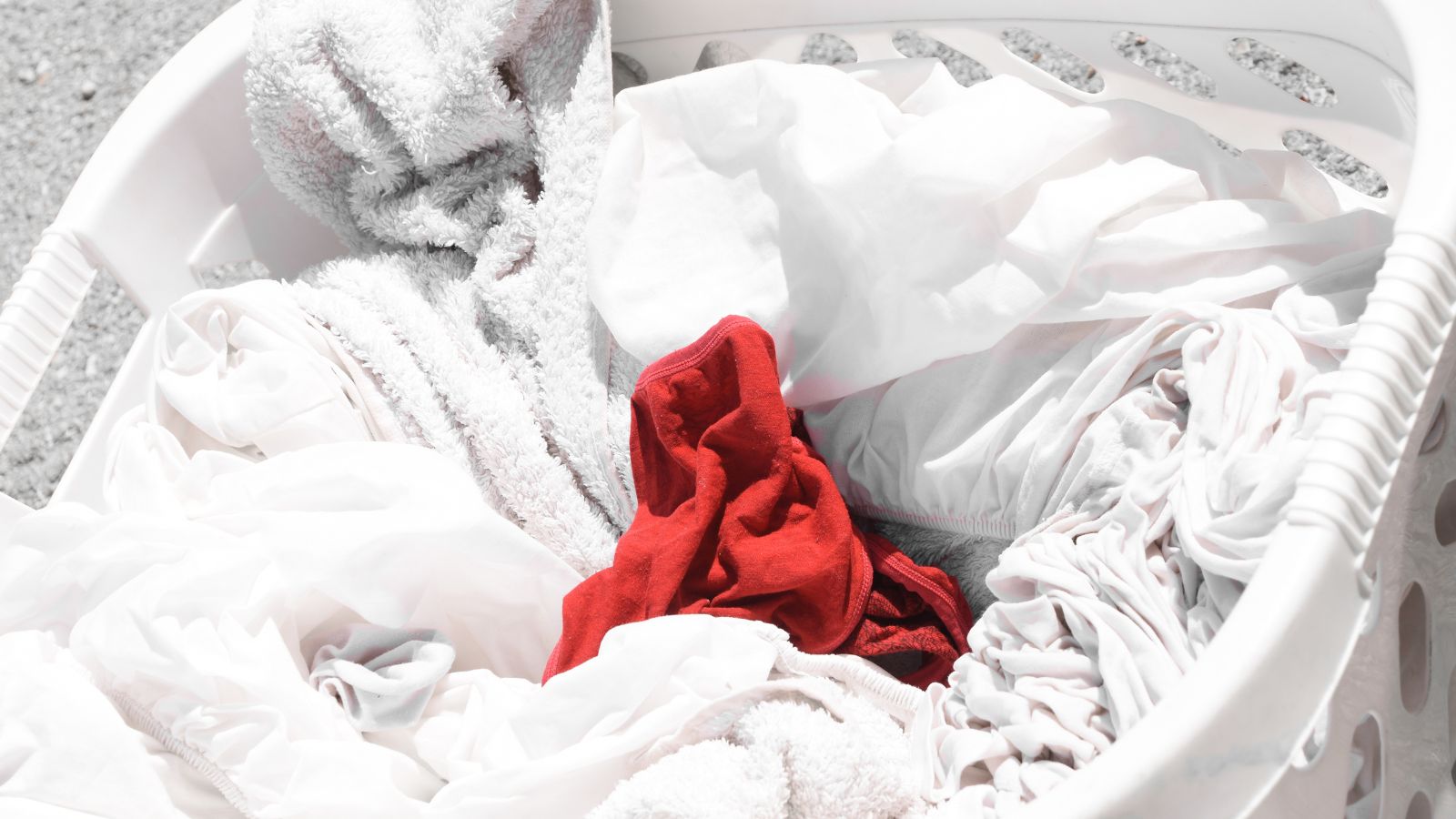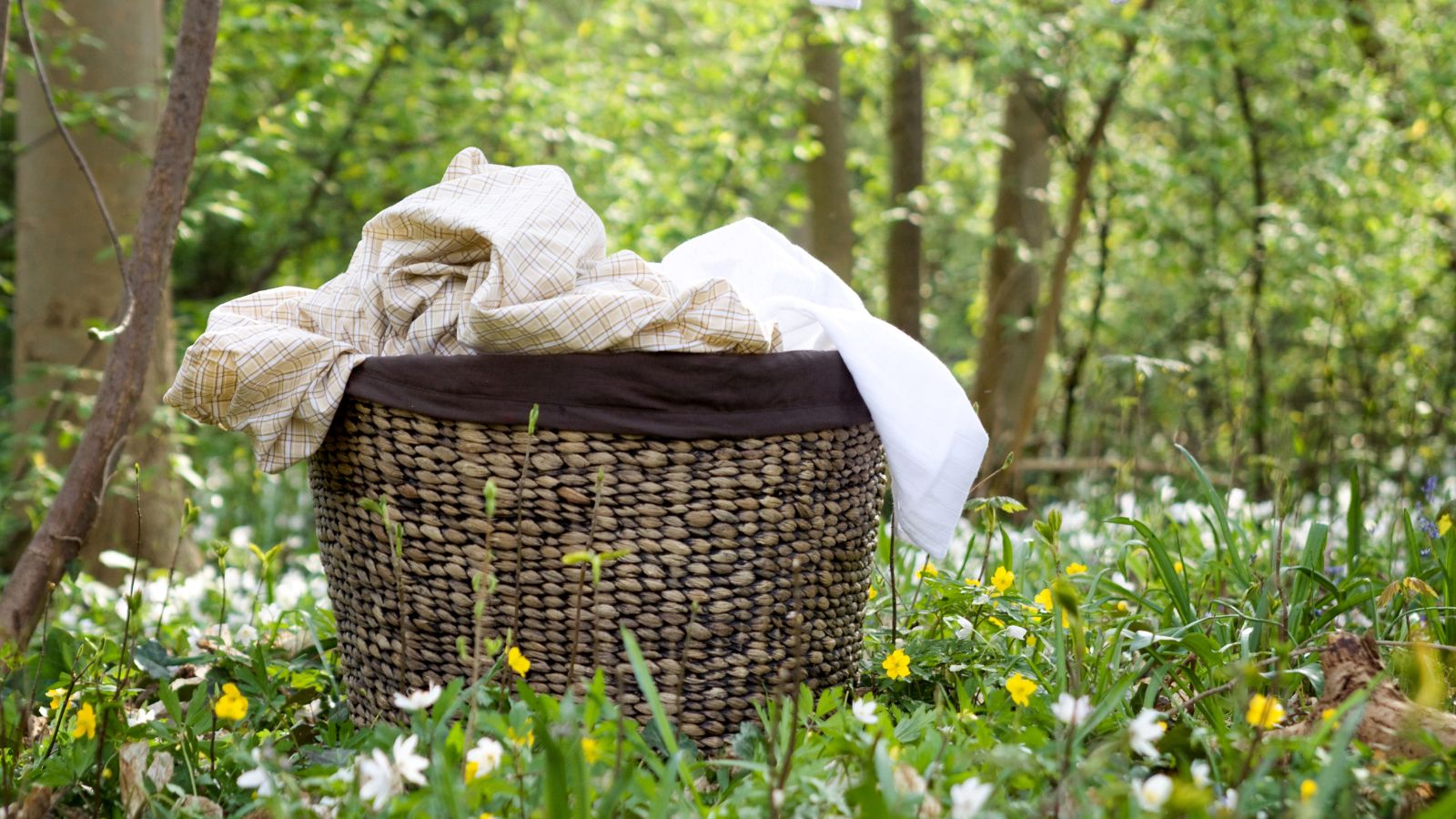How to make a wool sweater less itchy – 4 steps I use to treat natural fibers
Washing wool can be worrisome, but my four-step method removes itchiness without the risk of shrinking my sweaters


Wool sweaters are, in theory, a great investment piece. Sure to last and wonderfully warm they are a great winter staple or a summer throw-over piece for chilly nights – unless they are incredibly itchy, that is.
When I made the mistake of ordering a wool sweater online and not testing it to see how itchy it was, I had to find a way to make it a little more wearable and, while it is not as simple as just doing laundry, the process was very quick and easy, all things considered.
Here is how you can make a wool sweater less itchy.
How to make a wool sweater less itchy
Using only two ingredients and a bit of elbow grease, it is simple to get rid of the roughness of sheep’s wool. The good news is that it’s a process that would even work to wash a woolen blanket to stop itchiness too and keep your best throw blankets soft and cozy.

You will need:
- White vinegar: available at Walmart
- High-quality silicone-free hair conditioner: such as The Honest Company conditioner from Amazon
- A large ziplock bag or saran wrap
- Cold water
- A towel
1. Soak the sweater in vinegar and water
While using vinegar in laundry is usually done to help remove odors, my research revealed that it also has the ability to soften the stiff fibers of natural materials such as wool and it can even be a good substitute for fabric conditioner – a product that could have coated my sweater in a patina leaving it tacky to the touch.
I combined four tablespoons of distilled white vinegar with enough cold water to cover the sweater in a large bowl, ensuring that the fibers were thoroughly soaked through and squashing it down with my hand. Cold water is of the essence here if you want to avoid unshrinking clothes later down the line.
I then left this for 15-20 minutes to sit and soak.
2. Hand wash the sweater with a good hair conditioner
Once the sweater had soaked in vinegar, I emptied it out into my clean bathtub and got to work rinsing any remaining vinegar out of the fibers. This step took a lot of elbow grease as the sweater was seriously heavy by now and very waterlogged. The trick, I found, was to press the water out of the sweater against the bottom and side of the bath before saturating it again and repeating the process. Wringing it would have been easier but would have risked stretching the sweater out of shape.
Once rinsed, I laid the sweater flat on the tub floor and applied a liberal amount of good-quality hair conditioner to the garment before washing the garment by hand, working the conditioner into the wool as I would my own hair.
It is important to use a good quality hair conditioner for this to avoid coating the fibers in silicones that would leave behind an unpleasant build-up of product, potentially ruining the overall look of your garment.
After leaving the conditioner to sit on the garment for half an hour, I repeated the rinsing process again, working the excess conditioner out of the fabric and pressing out any remaining water, trying to get as much out as possible.
4. Leave flat to dry on a towel
When drying anything made of a heavy natural fiber like wool, be it clothing, wool blankets, or even washing a wool rug, it is important to leave the item completely flat to dry to prevent it from stretching out of shape under its own weight.
I laid my sweater out on a dry towel on a clothes drying rack for this, making sure to lay the sleeves out flat to the side of the body overnight. In the morning, the towel below was soaked so I changed it out and flipped the garment over, allowing that side to dry thoroughly too – being a thick garment, this took quite some time. You could speed it up by placing it somewhere warm such as near a heater or heat vent or by using a dehumidifier.
5. Wrap tightly in a bag and freeze overnight
Once completely dry, the next step was to bundle it up tightly in a plastic ziplock bag and place it in the freezer overnight. It felt incredibly unnatural to put a clothing piece that expensive in my kitchen freezer next to the frozen peas, but the idea was the freezing temperatures would force the tightly packed fibers to stay down and not stick out and irritate my sensitive skin.
I didn't have a ziplock bag large enough, so got creative with some saran wrap and tightly packaged the sweater up into a bundle, leaving it in the drawer for around eight hours before pulling it out and once again laying it flat to warm up.
My verdict
This method, although taking nearly three days to complete, certainly worked to help make my sweater noticeably less itchy and more wearable – I also think it made the sweater less prone to shedding too, so I wasn't leaving white fluff all over my home.
When using this method I found that just one wash was enough to make the sweater considerably less itchy on the inside, but having flipped it, the exterior was still a little bothersome having not come in close contact with the conditioner. If this bothers you, you could always make sure to wash the outside at the same time as the interior or, if you want to avoid stretching the garment by flipping it when wet, complete the process once more for an extra soft feel.
FAQs
Why is 100% wool itchy?
100% wool can be itchy depending on its source. Sheep wool, often the most affordable of the wools, is often quite coarse, with stiff fibers that rub against the skin and cause itching and irritation. Lambs wool, alpaca wool, cashmere, and merino wool, on the other hand, are considerably softer and less rigid, so should be a lot softer to the touch from the get-go – especially when washed and looked after correctly.
Can I use fabric softener on wool?
When washing anything made from real wool, it is best to skip the fabric softener to avoid damaging the fibers or leaving a sticky residue behind that can limit the fabric's ability to naturally manage your body temperature. Instead, natural softeners like vinegar diluted in cold water can be more beneficial.
I can't speak for every kind of wool blend, but this technique certainly worked wonders on my sheep and alpaca blend sweater – even if I got some strange looks from my partner for putting my clothes in the freezer.
Sign up to the Homes & Gardens newsletter
Design expertise in your inbox – from inspiring decorating ideas and beautiful celebrity homes to practical gardening advice and shopping round-ups.

Chiana has been at Homes & Gardens for two years and is our resident 'queen' of non-toxic living. She spends most of her time producing content for the Solved section of the website, helping readers get the most out of their homes through clever decluttering, cleaning, and tidying tips. She was named one of Fixr's top home improvement journalists in 2024.
-
 How to help hoverflies in your yard – discover the crucial role they play and 5 plants these underrated pollinators love
How to help hoverflies in your yard – discover the crucial role they play and 5 plants these underrated pollinators loveHoverflies are also an effective form of natural pest control
By Ciéra Cree
-
 Gwyneth Paltrow uses LED lights to bring a gallery-like feeling to her kitchen cabinets – you can achieve the same, unique look for $24
Gwyneth Paltrow uses LED lights to bring a gallery-like feeling to her kitchen cabinets – you can achieve the same, unique look for $24Gwyneth's glass-front cabinets become more chic and accessible with their hidden lights, which create a subtle glow in the space
By Hannah Ziegler
-
 How to manage laundry when you have overnight guests – 4 expert tips from a fabric care scientist
How to manage laundry when you have overnight guests – 4 expert tips from a fabric care scientistFabric care scientists share their tips for managing laundry when you have overnight guests, both before they arrive and after they have left
By Chiana Dickson
-
 How can you get pink out of white clothing? Laundry experts share their solutions for color-bleeding
How can you get pink out of white clothing? Laundry experts share their solutions for color-bleedingLaundry experts share their tips for getting pink dye out of white clothing to restore well-loved garments to their original crisp color
By Chiana Dickson
-
 How to remove pollen stains from fabric – expert tips from Tide’s laundry expert
How to remove pollen stains from fabric – expert tips from Tide’s laundry expertWe sat down with a laundry scientist to learn his tips for removing pollen stains from fabric quickly and easily for fab-looking clothing and reducing allergy symptoms this summer
By Chiana Dickson
-
 Why you should be using dryer balls – 5 reasons the pros love these reusable laundry saviors
Why you should be using dryer balls – 5 reasons the pros love these reusable laundry saviorsLaundry experts and professional cleaners explain why every household should be using dryer balls to help speed up their laundry and make the washes more sustainable
By Chiana Dickson